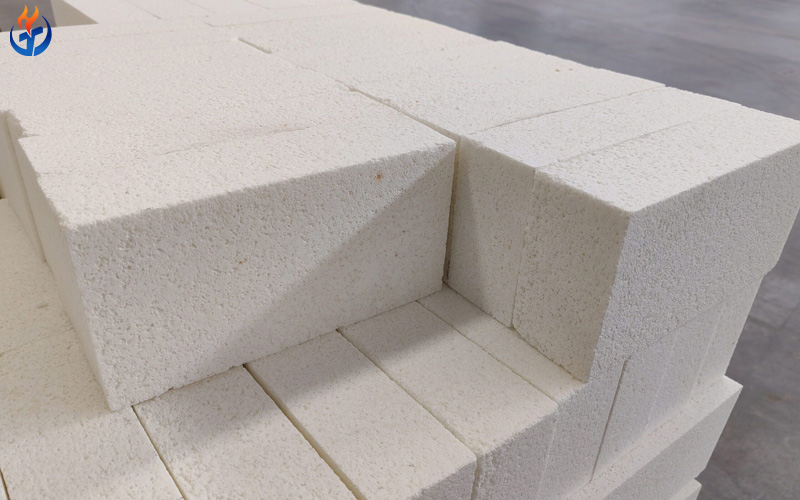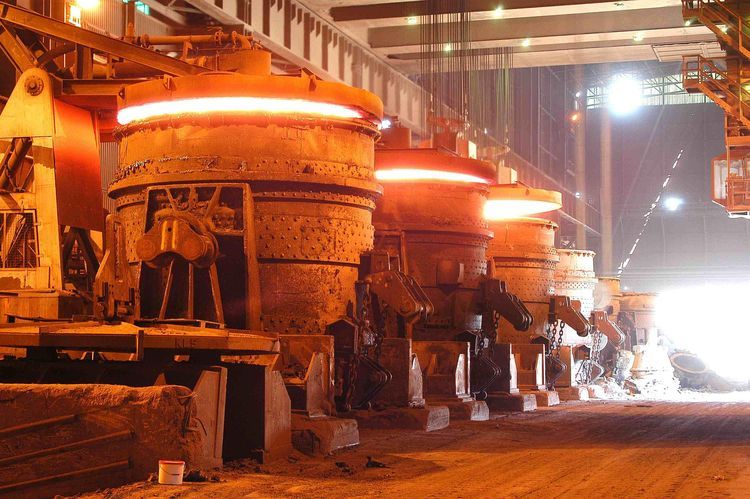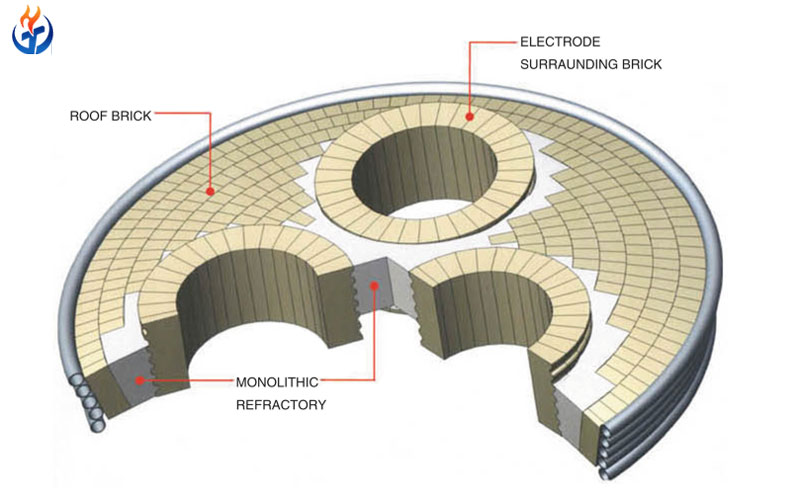In industrial high-temperature operations, thermal efficiency and energy conservation are crucial factors in ensuring sustainable and cost-effective production. Recuperative furnaces—used widely in the steel, glass, ceramics, and non-ferrous metal industries—rely heavily on the quality and performance of their lining materials to achieve these objectives. Among the various refractory options available, insulating firebricks have emerged as an essential choice for recuperative furnace lining, offering excellent thermal insulation, reduced fuel consumption, and extended furnace life.
As a professional insulating bricks supplier, we at Xintai Refractory specialize in manufacturing and supplying high-quality lightweight insulation bricks tailored to the demanding environments of recuperative furnaces. This article explores the role, benefits, and technical considerations of insulating bricks for recuperative furnace lining and how choosing the right material can dramatically enhance furnace efficiency.

Understanding Recuperative Furnaces
A recuperative furnace is designed to reuse heat from exhaust gases to preheat incoming air or fuel, thereby increasing the furnace’s thermal efficiency. The recuperator—usually a heat exchanger—transfers heat from the hot exhaust gases to the combustion air. This recovered heat significantly reduces energy consumption and CO₂ emissions, aligning with modern goals of sustainability and industrial efficiency.
However, to fully realize these benefits, the furnace lining must be able to withstand high operating temperatures while minimizing heat losses. This is where insulating firebricks become a vital component.
What Are Insulating Firebricks?
Insulating firebricks (IFBs), also known as lightweight refractory bricks, are specially engineered materials with low thermal conductivity and high porosity. Unlike dense firebricks designed for structural strength, insulating bricks focus on minimizing heat transfer through the furnace walls, ensuring maximum heat retention within the working chamber.
They are typically made from high-purity raw materials such as alumina, silica, and mullite, combined with foaming agents or lightweight aggregates to create a porous microstructure. The result is a brick that is strong enough to handle furnace conditions yet light enough to provide exceptional insulation.
Common Types of Insulating Bricks:
JM series mullite insulating bricks (JM23, JM26, JM28, JM30)
Lightweight silica bricks
Alumina insulating bricks
Clay insulating bricks
Each type varies in its composition, maximum service temperature, and thermal performance, allowing engineers to select the most suitable material for specific zones of the recuperative furnace.
Importance of Insulating Bricks in Recuperative Furnace Lining
Recuperative furnaces operate at temperatures between 1200°C and 1600°C, depending on the industry and the process requirements. In such high-temperature environments, every degree of heat retained inside the furnace translates into measurable savings in fuel and energy costs.
Insulating firebricks serve several critical functions:
a. Reducing Heat Loss
The low thermal conductivity of insulating bricks minimizes the heat transfer through furnace walls and roofs. This leads to reduced energy input requirements and improved thermal efficiency.
b. Lowering Operating Costs
With better insulation, less fuel is required to maintain desired temperatures. This results in significant cost savings over time, especially in continuous or large-scale operations.
c. Protecting Structural Refractory Layers
Insulating bricks are often used as backup lining behind dense refractory layers. They reduce the thermal load on structural bricks, extending the service life of both layers.
d. Enhancing Temperature Uniformity
Efficient insulation ensures more uniform temperature distribution across the furnace chamber, improving product quality and reducing thermal stresses on furnace components.
e. Promoting Energy Efficiency and Sustainability
Energy recovery systems like recuperative furnaces rely on maintaining thermal efficiency. Using lightweight insulating materials directly supports energy-saving and carbon-reduction initiatives.

Technical Specifications and Performance Indicators
As a professional supplier of insulating bricks, Xintai Refractory manufactures products that meet international standards (ASTM, ISO, JIS). Typical properties of insulating firebricks used in recuperative furnaces include:
| Item | JM23 | JM26 | JM28 | JM30 |
|---|---|---|---|---|
| Bulk Density (g/cm³) | 0.6–0.8 | 0.7–0.9 | 0.8–1.0 | 0.9–1.1 |
| Cold Crushing Strength (MPa) | ≥2.0 | ≥3.0 | ≥4.0 | ≥5.0 |
| Refractoriness (°C) | ≥1260 | ≥1400 | ≥1500 | ≥1600 |
| Thermal Conductivity (W/m·K) at 1000°C | 0.25 | 0.28 | 0.30 | 0.35 |
| Permanent Linear Change (%) | ±0.3 | ±0.3 | ±0.3 | ±0.3 |
Key Selection Tip:
For recuperative furnace working linings where direct flame contact occurs, higher-alumina insulating bricks such as JM28 or JM30 are preferred. For backup linings or less-exposed zones, JM23 or JM26 provide a cost-effective solution with excellent insulation.
Applications in Recuperative Furnace Zones
The lining design of a recuperative furnace typically includes multiple zones, each exposed to different thermal and mechanical conditions. Correctly selecting insulating bricks for each zone is crucial:
a. Furnace Roof and Walls
Lightweight mullite insulating bricks (JM26–JM30) are commonly used due to their excellent strength and thermal shock resistance.
b. Recuperator Chamber
Insulating bricks here must resist hot gas corrosion and maintain stability under temperature fluctuations. High-alumina insulating bricks offer superior performance in this zone.
c. Burner and Air Preheating Sections
Since these areas face direct exposure to flame and temperature cycling, dense refractory linings are used in combination with insulating bricks as backup layers.
d. Flue and Exhaust Areas
Lower-temperature zones can effectively utilize JM23 insulating bricks to minimize heat escape and improve energy recovery efficiency.
Global Applications and Industry Examples
Xintai insulating bricks have been successfully applied in various recuperative furnace projects, including:
Steel reheating furnaces for billet and slab processing,
Glass melting recuperative furnaces,
Aluminum and copper heat treatment furnaces,
Ceramic tunnel kilns and roller kilns equipped with recuperative systems.
Each application demonstrates measurable improvements in energy efficiency, temperature uniformity, and operational stability.
Conclusion
Insulating firebricks are a cornerstone of modern recuperative furnace lining design, balancing thermal efficiency, cost control, and operational safety. Their ability to minimize heat loss and protect dense refractories ensures that furnaces achieve optimal performance over extended service cycles.
As a professional insulating bricks supplier, Xintai Refractory is committed to providing high-performance solutions tailored to each customer’s specific furnace design and process requirements. Whether you need mullite insulating bricks for high-temperature zones or lightweight backup insulation for outer linings, we can deliver materials that meet your expectations for quality, durability, and efficiency.



